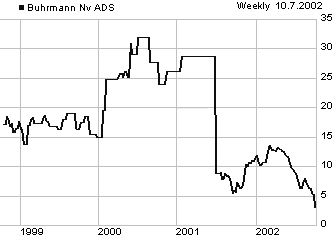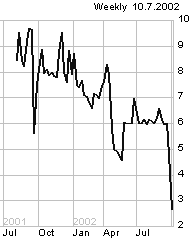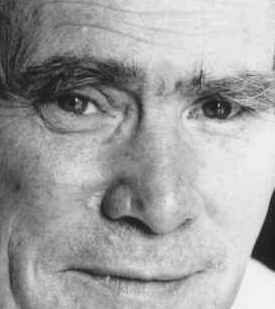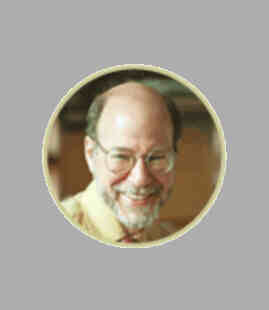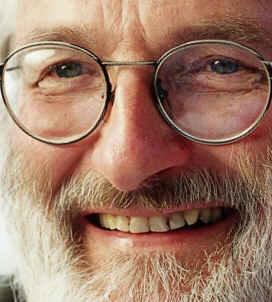Deaths
which occurred on an October 07:
2003
Arthur
Berger, US composer and music critic born on 15 May 1912. His
autobiography is Reflections of an American Composer (2002).
2002 Col. Rajeh Abu Lehiya, 47, head of Palestinian riot
police, kidnapped and murdered by masked gunmen led by Hamas activist Emad
Akel, in revenge for his brother Raed's death in 2001 at the hands of Palestinian
police during a Gaza City demonstration against the US attack on Osama bin
Laden and the Taliban in Afghanistan. Today the Akel gunmen disguised as
police officers set up a fake roadblock and abducted Abu Lehiya when his
car stopped, later killing him with 10 gunshots. In clashes that followed,
police killed two Hamas gunmen in a group that freed while the killers they
were arresting in Gaza City. Two other persons died when police fired on
a pro-Hamas protest in the Nusseirat refugee camp, where the Akel family
lives. 15 persons were injured.
2002:: 16 Palestinians, aged
14 to 52, in an Israeli attack by the Givati Brigade infantry troops,
combat engineers, some 40 tanks and armored vehicles, and helicopters, starting
shortly after midnight on into the al-Amal neighborhood on the west side
of Khan Younis, Gaza Strip. Ten of the deaths were from a helicopter missile
that hit a crowd which came out on the streets when they heard the tanks
leaving at 04:30 (02:30 UT). Some 80 Palestinians are wounded, 4 of them
when the Israeli troops fired at the Naser hospital in Khan Younis, where
most of the other wounded had been brought..The Reuters body count of the
al-Aqsa intifada now is “at least” 1594 Palestinians and 602 Israelis.
2002 Ed Rossbach, 88, US fiber “artist” who used
nontraditional textile materials, foil, plastic bags, Mylar, twigs, staples
and twine in his “artwork”. Author of two books on basket weaving.
2001 Herbert L. Block “Herblock”, Pulitzer
Prize-winning cartoonist born on 13 October 1909.
2000 Fahed
Mustafa Bacher ‘Odeh, 23, Palestinian killed by gunfire from Israeli settlers,
in the village of Bidia, Qalqilya district, West Bank.
1995
Olga
Taussky-Todd, Jewish Austrian US mathematician born on 30 August
1906. She was a computer pioneer, and also worked on matrix theory, group
theory, algebraic number theory, numerical analysis.
1985 Leon Klinghoffer,
69, in the hijacking of the Achille Lauro, the disabled US
is shot by Palestinian terrorists. ^top^
Four Palestinian terrorists board the
Italian cruise ship Achille Lauro in Alexandria, Egypt, in
order to hijack the luxury liner. The well-armed men, who belonged
to the Popular Front for the Liberation of Palestine (PFLP), the terrorist
wing of the Palestinian Liberation Organization (PLO) led by Abu Abbas,
easily took control of the vessel since there was no security force
on board. Abbas had been responsible for many attacks on Israel and
its citizens in the early 1980s. On multiple occasions, he sent men
on hang gliders and in hot air balloons on bombing missions to Israel,
all of which turned out to be miserable failures. In an attempt to
salvage his reputation, Abbas ordered the hijacking of the Achille
Lauro. Yet there were no specific goals or demands set forth
in the mission.
At first, the
terrorists demanded that Israel release the 50 imprisoned PFLP members
and sought entry to a Syrian port. But when Syria denied the request,
the terrorists lost control of the situation. Gathering the American
tourists on board, the terrorists randomly chose to kill Leon Klinghoffer.
They shoot him in the head and throw him overboard with his wheelchair
.
Klinghoffer's cold-blooded
murder backfired on the terrorists. The world's outrage forced PLO
chief Yassir Arafat to cut PLO ties with the terrorists and to demand
that Abbas end the situation. On 09 October, Abbas contacted the terrorists,
ordered them not to kill any more passengers, and arranged for the
ship to land in Egypt. Meanwhile, the elite US Navy SEALs were dispatched
to raid the Achille Lauro. But by the time they arrived,
the terrorists had already gotten off the ship in Egypt and boarded
a plane to Libya. The United States then sent out two F-14 fighter
jets, which intercepted the plane and forced it to land in Sicily.
A three-way standoff between the PFLP terrorists, the Americans, and
the Italian Army on the runway in Sicily ended with the Italians taking
Abbas and the other terrorists into custody.
Despite intense US pressure, the Italians allowed Abbas to leave the
country, choosing to prosecute only the four who were on board. All
were convicted, but only one received a sentence of 30 years; the
others got off with lighter prison terms. Abbas was tried in absentia
by Italy and sentenced to life in prison.
Palestinians would claim that Abbas ought to be considered amnistied,
because the Palestinian-Israeli interim agreement signed on 25 September
1995 stated that members of the Palestine Liberation Organisation
must not be detained or tried for matters they committed before the
Oslo peace accord of 13 September 1993. This interim agreement was
signed on the US side by President Clinton and his Secretary of State,
Warren Christopher.
In a 1998 interview
with Reuters, Abbas would say that the murder of Klinghoffer was a
mistake and the PLF mission had been to use the Achille Lauro
as transportation to Israel for an attack on a naval base.
Abbas
was not captured until 14 April 2003, when US special forces found
him in recently conquered Baghdad, Iraq, where, for most of the time
since 1985, he had been enjoying the hospitality of the Saddam Hussein
dictatorship. A few days before his arrest, as US forces were advancing,
he tried twice to flee to Syria, but was refused entry. |
1965 Jesse
Douglas, US mathematician born on 03 July 1897. He worked on
geometry, group theory and the calculus of variations.
1963
7190 victims of Hurricane Flora in Haiti and Dominican Republic
1953 Emil Filla, Czech painter, printmaker, sculptor,
writer, and collector, born on 04 April 1882. — more
1946 Christopher Richard Wynne Nevinson, English
painter born on 13 August 1889. — MORE
ON NEVINSON AT ART “4” OCTOBER
with links to, and comments on images.
1943: 96 US POWs, executed by
Japanese on Wake Island
^top^
Rear Adm. Shigematsu Sakaibara, commander of the Japanese garrison
on the island, orders the execution of 96 Americans POWs, claiming
they were trying to make radio contact with US forces. In late December
1941, the Japanese reinforced existing forces on Wake Island, part
of a coral atoll west of Hawaii, in massive numbers after being unable
to wrest the island from a small number of Americans troops earlier
in the month. The Japanese strength was now overwhelming, and most
of those Americans left alive after the battle were taken by the Japanese
off the island to POW camps elsewhere. Ninety-six remained behind
to be used as forced labor. The Allied response was periodic bombing
of the island-but no more land invasions, as part of a larger Allied
strategy to leave certain Japanese-occupied islands in the South Pacific
to basically starve in isolation. The execution of those remaining
American POWs, who were blindfolded and shot in cold blood, remains
one of the more brutal episodes of the war in the Pacific. |
1940 Maurice Leloir, French artist born on 01 November
1853.
1931 Charles Ricketts, English painter, designer,
writer, and collector, born on 02 October 1866, illustrator of Wilde's The
Sphinx . — more
1918 Pierre-Maurice-Raymond Duchamp-Villon, French sculptor
and draftsman born on 05 November 1876 — more
1904 Isabella Lucy Bird (Mrs. Bishop), author. BIRD
ONLINE: The
Hawaiian Archipelago: Six Months Among the Palm Groves, Coral Reefs, and
Volcanoes of the Sandwich Islands, A
Lady's Life in the Rocky Mountains, A
Lady's Life in the Rocky Mountains, Unbeaten
Tracks in Japan
1903 Rudolf
Otto Sigismund Lipschitz, German mathematician born on 14 May
1832. He is remembered for the "Lipschitz condition", an inequality that
guarantees a unique solution to the differential equation y' = f (x, y).
1895 William Wetmore Story, author. STORY ONLINE:
Graffiti
d'Italia, He
and She: or, A Poet's Portfolio, Nature
and Art: A Poem, A
Roman Lawyer in Jerusalem, First Century
1893 William Smith, author. WILLIAM SMITH ONLINE: A
Smaller History of Greece: From the Earliest Times to the Roman Conquest
1890 John Hill Hewitt, author. HEWITT ONLINE: War:
A Poem, WIth Copious Notes, Founded on the Revolution of 1861-62, (up to
the Battles before Richmond, Inclusive)
1864 Yanks and more Rebs at
Battle of Darbytown Road (Johnson's Farm)
^top^
A Confederate attempt to regain ground that had been lost around Richmond
is thwarted when Union troops turn back General Robert E. Lee's assault
along Darbytown Road. In the summer of 1864, the campaign between
Lee and Union General Ulysses S. Grant ground to a halt at Petersburg,
40 km south of Richmond. The two great armies settled into trenches
for a siege, and the lines soon extended all the way back to Richmond.
Grant periodically attacked portions of the Rebel defenses but was
not successful. On 29 September, Union forces captured part of Richmond's
outer defense at the Battle of New Market Heights. Although the capital
was still safely in Confederate hands, Lee was concerned about the
new position of the Yankee troops.
Lee sent two divisions under Generals Charles Field and Robert Hoke
to move around the end of the Union line. Lee hoped that the Federal
flank could be turned and the Confederates could regain the defensive
works lost the week before. On the morning of October 7, the Confederates
moved down Darbytown Road and around the Union right flank and attacked
1700 cavalrymen. The assault sent the Yankees into a quick retreat.
The Confederates captured eight cannons and drove the Union troopers
into the breastworks of General Alfred Terry. Alerted to the advancing
Confederates, Terry summoned reinforcements to his position. By the
time the Confederates worked their way through the thick foliage,
they faced a strong Union force. Lee ordered an attack anyway. Brigades
advanced one at a time, and the Yankee artillery tore the lines apart.
By the afternoon, the Confederates withdrew to their original position.
They lost 700 men while the Yankees lost only 400, and no ground was
gained. Lee did not make another attempt to regain the ground and
focused instead on setting up defenses closer to Richmond. |
1817 Godefroy Pierre-Louis de Larive, Swiss artist born
on 21 October 1735.
1780 Major Patrick Ferguson,
156 other Tories, and 28 Patriots, at King's Mountain.
^top^
During the American War for Independence, Patriots under Colonel William
Campbell defeat Tories under Major Patrick Ferguson at the Battle
of King's Mountain in South Carolina. Major Ferguson's Tory force,
made up mostly of American Loyalists from South Carolina and elsewhere,
was the western wing of General Lord Cornwallis' North Carolina invasion
force. One thousand American frontiersmen under Colonel Campbell of
Virginia gathered in the backcountry to resist Ferguson's advance.
Pursued by the Patriots, Ferguson positioned his Tory force in defense
of a rocky, treeless ridge named King's Mountain.
The Patriots charged the hillside multiple times, demonstrating lethal
marksmanship against the surrounded Loyalists. Unwilling to surrender
to a "band of banditti," Ferguson led a suicidal charge down the mountain
and was cut down in a hail of bullets. After his death, some of his
men tried to surrender, but they were slaughtered in cold blood by
the frontiersmen, who were bitter over British excesses in the Carolinas.
After almost an hour of fighting, the Patriots had killed 157 Tories,
including Major Ferguson himself, wounded 163, and captured 698. Colonel
Campbell's force suffered only 28 killed and 60 wounded. |
1772 John Woolman, author. WOOLMAN ONLINE: The
Journal of John Woolman, The
Journal of John Woolman
1737 300'000 drowned
as 12-meter waves sink 20'000 small in Bengal, India.
1719
Pierre
Rémond de Montmort, Parisian mathematician born on 27
October 1678. Author of Essay d'analyse sur les jeux de hazard
(1708).
1690 Arent van Ravesteyn, Dutch artist born
in 1625.
1577 George Gascoigne. GASCOIGNE ONLINE:
author of The
Posies, The
Steele Glas and The Complaynte of Philomene, translator of Ariosto's
Supposes,
co-translator of Euripides's Jocasta
1571 Some 25'000 Turks and some
Christians at the Battle of Lepanto
^top^
In the last great naval battle featuring galleys, the Ottoman navy
under Ali Pasha is defeated at the Battle of Lepanto by a 316-ship-strong
Christian coalition of Spaniards and Italian under the overall command
of Spain's Don Juan de Austria. Fought off of the southwestern coast
of Greece, at least 25'000 Turks are killed and eighty of the Ottoman
navy's 250 ships destroyed during the last major confrontation between
oared ships. |
1488 Andrea di Michele di Francesco Cione del Verrocchio,
Italian sculptor, goldsmith, and occasional painter, born in 1435. —
MORE
ON VERROCCHIO AT ART “4” OCTOBER
with links to images and comments on one of them.
0336 St
Mark, Pope. He ruled only a few months at a time when the church
was battling serious problems with Arianism. He ordained many bishops and
deacons. |
